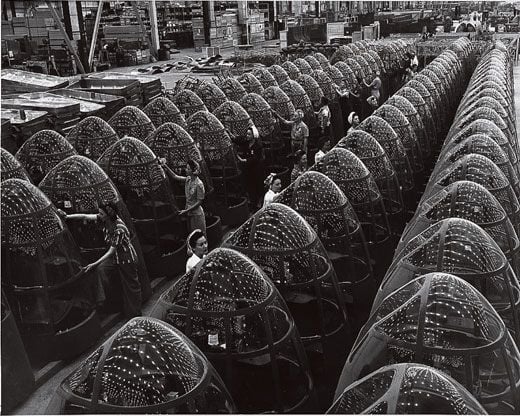300,000 Airplanes
Individual effort and mass production are equally represented in a new book celebrating World War II aircraft factories.
/https://tf-cmsv2-smithsonianmag-media.s3.amazonaws.com/filer/300k-388-may07.jpg)
In 1939, U.S. aircraft factories manufactured 921 warplanes. By 1944, the annual output was a staggering 96,318 units. Total U.S. wartime production of military aircraft surpassed 300,000. A new book, The American Aircraft Factory in World War II (Zenith Press, 2006), documents the industry’s transformation from an enterprise of craftsmen building airplanes by hand to a powerhouse of men and women toiling with assembly-line efficiency. “The aircraft manufacturers were dedicated to engineering and manufacturing excellence, but arguably no more so than they are today,” says the book’s author, Bill Yenne. “What happened was that the whole nation came together for a single purpose, and successfully committed itself to doing all that was necessary. All aspects of what the United States did during World War II, both at home and on the global battlefronts, were unlike anything before or since.”
Over the years, Yenne has written histories of the great U.S. airplane makers, including Boeing, Convair, Lockheed, McDonnell Douglas, and North American Aviation. “While doing this, I was time and again amazed by their Herculean wartime effort,” he says. “This book gave me an opportunity to tell the story in both words and pictures.” In addition to Yenne’s meticulously researched text, the book offers 175 photographs, many of them candid black-and-white images that reveal the sculptural beauty of airplane parts precisely arrayed on factory floors. The book also has plenty of posed, beautifully lit color photographs of workers on production lines.
The federal government’s Office of War Information and company photographers made the images in an effort to publicize the war effort. In Yenne’s book, they remind us that the work was not just an exercise in patriotism, but a giant step forward in transforming aviation into one of America’s biggest industries.
